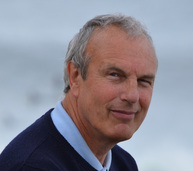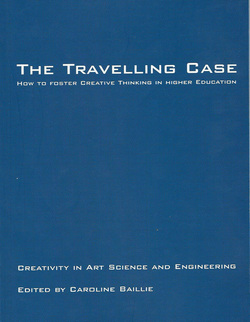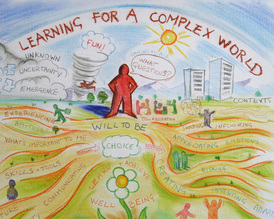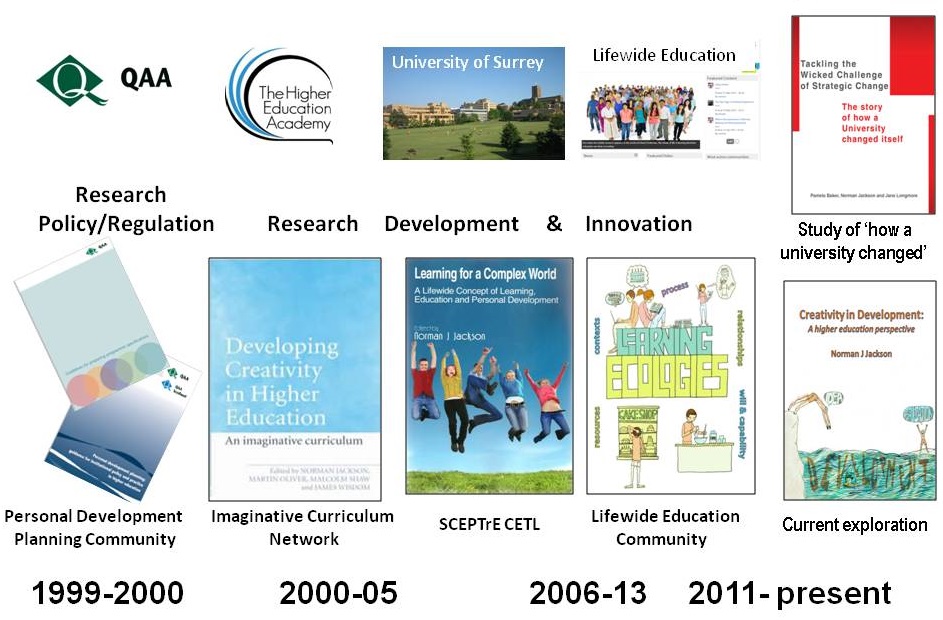
Norman Jackson has spent the last 20 years researching, writing about and supporting Higher Education professionals and institutions seeking to improve their understandings of creativity and support students' creative development.
As a child Norman loved to draw and paint and his ambition was to study art and design. But then he discovered geology and that became his passion and focus for creative self-expression. Geologists have to be creative to imagine what they can't physically see beneath the surface!
His interest in creativity in higher education probably began in 1998 when, developing policy for programme specifications at the QAA, he realised that the outcomes model of learning was neglecting important developmental outcomes – like creativity. While working at QAA he also developed policy to support Personal Development Planning (PDP). This work convinced him of the value and wisdom of the self-regulatory model of learning and action that underpinned PDP. Neither of these experiences were explicitly about creativity in higher education but they exerted a strong influence on what followed.
My involvement with creativity in higher education
As a child Norman loved to draw and paint and his ambition was to study art and design. But then he discovered geology and that became his passion and focus for creative self-expression. Geologists have to be creative to imagine what they can't physically see beneath the surface!
His interest in creativity in higher education probably began in 1998 when, developing policy for programme specifications at the QAA, he realised that the outcomes model of learning was neglecting important developmental outcomes – like creativity. While working at QAA he also developed policy to support Personal Development Planning (PDP). This work convinced him of the value and wisdom of the self-regulatory model of learning and action that underpinned PDP. Neither of these experiences were explicitly about creativity in higher education but they exerted a strong influence on what followed.
My involvement with creativity in higher education

In 2000 Norman moved to the newly formed Learning and Teaching Support Network (LTSN). As a new organisation he had to invent his role. He was given a budget and a blank sheet of paper and told to engage with something that would help higher education enhance teaching and learning. Given LTSN's commitment to work on assessment he chose the idea of curriculum development and more explicitly the idea of curricula that fostered student creativity. He formed a small team of people who shared his interests and beliefs and together they formed the Imaginative Curriculum Network for people working in higher education who were interested in students' creative development. He commissioned a number of research studies, organised and facilitated a number of institutional, regional and national events and discussions on the email list, and undertook a number of surveys in disciplines. When the Higher Education Academy (HEA) was formed in 2003 it continued to support this work and the results were summarised and published in a book 'Developing Creativity in Higher Education: An Imaginative Curriculum'.Growing out of this work he began to appreciate that people were creative in all aspects of their lives and if HE was to support students' creative development it needed to appreciate and recognise their creativity in all aspects of their lives. This was the trigger for the development of a lifewide perspective on education.
During his time at LTSN he teamed up with Caroline Baillie to organise and support a professional development process called CASE - Creativity in Arts, Sciences and Engineering in which a group of academics from a range of disciplines came together for 48 hours to learn and experience a range of techniques aimed at encouraging creative thinking. The process then involved participants in applying the techniques they had learned in their particular contexts. The results were shared through the book 'Travelling CASE: How to foster creative thinking in higher education'. Through this process he got to know Fred Buining, a great facilitator with an international consultancy, and they worked together for about 6 years on a number of projects including the HEA Change Academy, and SCEPTrE's Creative Academy and Zooangi.
During his time at LTSN he teamed up with Caroline Baillie to organise and support a professional development process called CASE - Creativity in Arts, Sciences and Engineering in which a group of academics from a range of disciplines came together for 48 hours to learn and experience a range of techniques aimed at encouraging creative thinking. The process then involved participants in applying the techniques they had learned in their particular contexts. The results were shared through the book 'Travelling CASE: How to foster creative thinking in higher education'. Through this process he got to know Fred Buining, a great facilitator with an international consultancy, and they worked together for about 6 years on a number of projects including the HEA Change Academy, and SCEPTrE's Creative Academy and Zooangi.

In late 2005 Norman moved to the University of Surrey to lead the Surrey Centre for Excellence in Professional Training and Education which focused on informal learning as a way of supporting students’ professional development. Here he began to develop and apply the idea of lifewide learning and within this framework to examine further, how and where students were being creative in different parts of their lives. He began to see personal creativity as an everyday phenomenon to see the development of student's creative potential as being integral to their survival, prosperity and fulfilment in the complex world that they will inhabit throughout their lives. In 2011 Norman set up his own social enterprise Lifewide Education to promote the idea of lifewide learning and support people and institutions wanting to develop their own practices in lifewide learning and education.
Between 2011-13 Norman was principal researcher for a study of how educational innovation emerged through a strategic change programme at Southampton Solent University. Through this work he was able to examine the nature of bottom-up educational innovation and the way creativity emerged or was inhibited by institutional culture, structure and management practices. The experience provided him with an opportunity to witness personal creativity in the service of educational development.
For more information please visit Norman's website or connect with him on twitter @lifewider1 @lifewider @academiccreator
LinkedIn or Academic.edu
Between 2011-13 Norman was principal researcher for a study of how educational innovation emerged through a strategic change programme at Southampton Solent University. Through this work he was able to examine the nature of bottom-up educational innovation and the way creativity emerged or was inhibited by institutional culture, structure and management practices. The experience provided him with an opportunity to witness personal creativity in the service of educational development.
For more information please visit Norman's website or connect with him on twitter @lifewider1 @lifewider @academiccreator
LinkedIn or Academic.edu

